- The appearance of the shrew
- Varieties of Shrews
- Shrew
- Burrows and moves of the shrew
- Rodent control
- Means for expelling a rodent from a site
Shrews are the smallest terrestrial mammals in the world, but in the garden they can do huge damage by destroying beneficial insects and digging up all the beds. Therefore, it is necessary to deal with the shrew in the garden quickly enough, until it has bred in large quantities.
Description and biological characteristics
According to historical data, these mammals were brought to Europe by ship. Over the past centuries, shrews have spread throughout almost the globe, except for the northern polar zones, Australia and South America. They live in the plains and mountains, in tropical forests and deserts, prefer places with high humidity and settle closer to the water.
Shrews dig holes and passages up to several meters long, arrange nests in them, as well as in fallen trees, sometimes in structures built by man. Often they use moleholes for their needs.
Shrew - an animal with a gray-brown fur coat, large head, belongs to the order of insectivorous mammals. The average size is 5-7 cm, some species grow to 18-20 cm. From a distance it looks like field mouse, the difference consists only in a more elongated ellipsoidal shape of the head and a thick tail. The above photos and description show that her muzzle is longer than that of a mouse, and her nose looks like a proboscis. Main food long nose mice is an:
- insects and their larvae;
- earthworms;
- frogs and lizards;
- cubs of voles and other small rodents.
Mouse lifespan - up to 1.5 years. Their distinctive feature is high fecundity. Females enter the childbearing age as early as 1-2 months and are able to bring annually 2-4 offspring, each with 10-14 cubs that are born completely naked and blind. Mice breed very active. Taking this into account, when pests are found in your garden, each owner will think about how to get rid of shrews on the site in the fastest way.
Interesting!
Mom shrews periodically change the placement of their babies. When moving to another nest, the mother goes first, and behind her, clinging to the tail in front of the standing mother or cub, the remaining babies move.
On the territory of Russia in summer cottages there are several species of these animals:
- dwarf polydent or baby shrew, differ in tooth color;
- shrew - the smallest animal in the shrew family 3-5 cm in size with light brown hair;
- putoraki - live in the Caspian zone and Kazakhstan in semi-deserts and deserts;
- coutors or water melts - semi-aquatic mammals with a black or brown back and a light abdomen, characterized by characteristic features of the body structure intended for aquatic life.
The benefits and harms of shrews
Due to the high metabolic rate, shrews are forced to obtain food around the clock. A constant feeling of hunger forces the animal to eat prey in an amount exceeding its weight by almost 2 times.Therefore, he almost does not have time to sleep, but the number of meals per day can reach up to 80 times.
Having settled in a certain area, a shrew in the garden gnaws at the roots of plants, eats root crops, makes moves in the middle of green lawns. Eating various pests, such as bears, slugs, May beetles, leaf beetles, weevils, caterpillars, etc., the animal is beneficial for planting. However, at the same time, it can destroy beneficial insects.
For humans, this mammal is not dangerous. Some scientists believe that shrews in the country help improve soil aeration. However, in a couple of days they are able to completely dig all the beds, destroying flowers, grass and vegetables. The owner of the garden will never like this, and he will think about how to remove these pests that have settled on a summer cottage.
Interesting!
Shrews are looking for food, guided by the sense of smell and touch, however, some types of shrews also have the ability to echolocation. There are also poisonous species of these mammals that live in Russia and North America: a short-tailed shrew and a water cutter.
How to detect the presence of a shrew
The first signs of the appearance of a shrew — dug “underground tunnels” and heaps of dug up land — gardeners can confuse with moleholes or dug field mice. Each animal has its own plot of up to 30-50 square meters. m and lives alone, not letting neighbors into its territory. If a greenhouse is located on a site, then a shrew will definitely visit it, having penetrated inside through underground passages.
To make sure that it was shrews who settled on the site, they must be seen, but it is very difficult to do because of their size. Their minks are very small, and the nests are either in burrows or in old trees. The bottom is lined with grass and foliage for warming. Burrows and underground labyrinths have a smaller diameter compared to wormholes.
On a note!
If, in addition to the dug up earth, damage to the tubers is found on the garden plot, roots of garden crops or trees are gnawed, then the culprit cannot be a shrew, because she does not eat plants.
How to deal with shrews
It should be immediately clarified that the appearance of these mammals in a garden or suburban area cannot be prevented: no fences will save, because they move only by underground passages and can come quite unexpectedly. Fighting shrews can be carried out in several ways:
- The use of chemical poisons is the most effective way, although it is inhumane, but it helps to radically get rid of such pests. These are preparations: Rat death, The Nutcracker, Hunter anti-rodent and any chemical poisons intended for small rodents, which are laid out near the entrance to the burrows. The composition of such funds includes toxic substances that cause paralysis of the respiratory system or internal bleeding, due to which animals quickly die.
- Various methods, accumulated by experience over previous centuries, which do not require large financial expenses, will help get rid of folk remedies.
- Mechanical methods of control: the installation of traps and traps with bait will allow to destroy the proliferated pests.
- Installing ultrasonic repellers is a simple way by which ultrasound at low frequencies (up to 400 Hz) can drive not only shrews, but also moles, mice and other pests from the territory of the site. Such electronic devices are powered by electricity or batteries, and there are also models that recharge from solar energy in the daytime.
Folk methods
For many years, summer residents and owners of summer cottages and suburban areas have tested various folk remedies for shrews:
- planting sharply smelling plants throughout the site (wormwood, mint, lentils, imperial hazel grouse and legumes) or scattering of substances with an unpleasant odor near the burrows (naphthalene, kerosene, rotten fish);
- a fairly simple way is to pour water into the discovered holes from a hose or a 10-liter bucket, as well as kerosene or diesel fuel;
- the use of gas bombs, smoke bombs or poisonous gas - pests will flee;
- the use of reagents with a strong odor: Pomethanol, Ecara, Creatol, etc., however, this method is not recommended for use next to fruit trees;
- do-it-yourself installation of mechanical self-made repellers with sharp sounds: tin turntables, cut plastic bottles on a stick up to 1 m high, with gusts of wind they make sounds that the pests fear, which will force them to leave the territory;
- application ultrasonic repellers;
- to protect against the penetration of shrews from neighbors, they dig in sheets of iron or slate along the perimeter of the site to a depth of 1-1.5 m;
- planting between onions in the garden plot of onions and garlic, the aroma of which cannot be tolerated by such pests;
- inside the hole you can lay a bunch of hemp: it begins to rot and emit a characteristic odor that will force the animals to leave the site.
Important!
If the shrew accidentally ran inside the house, then you do not need to touch it. After some time, she herself will break free. they do not settle in the premises.
Despite all of the above methods of dealing with shrews, after some time, if you do not take protective noise and other measures, they can come to visit again, which will become noticeable by the heaps of dug up earth appearing in the middle of the garden, lawn and bare plant roots.


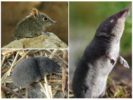
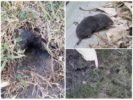


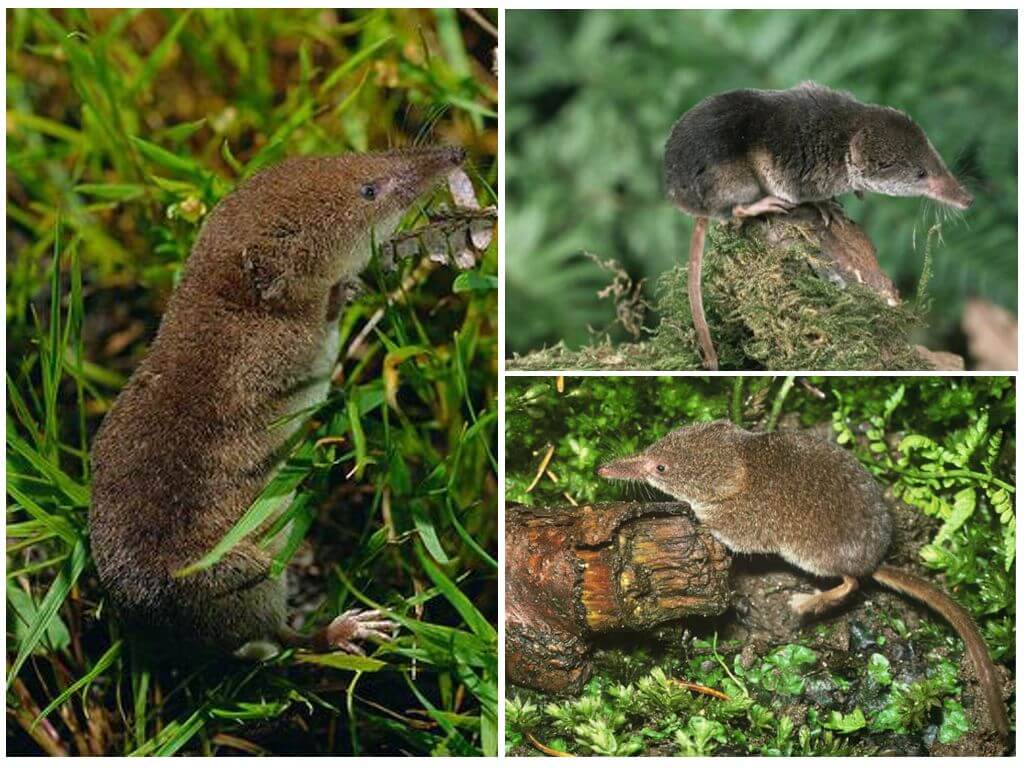
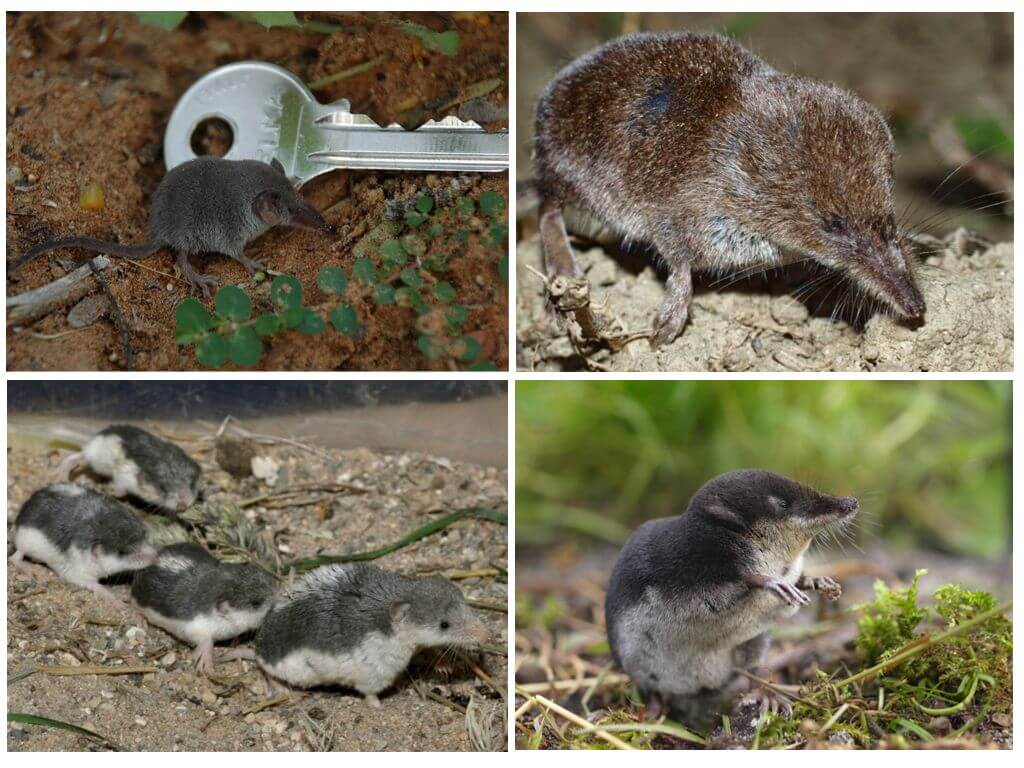
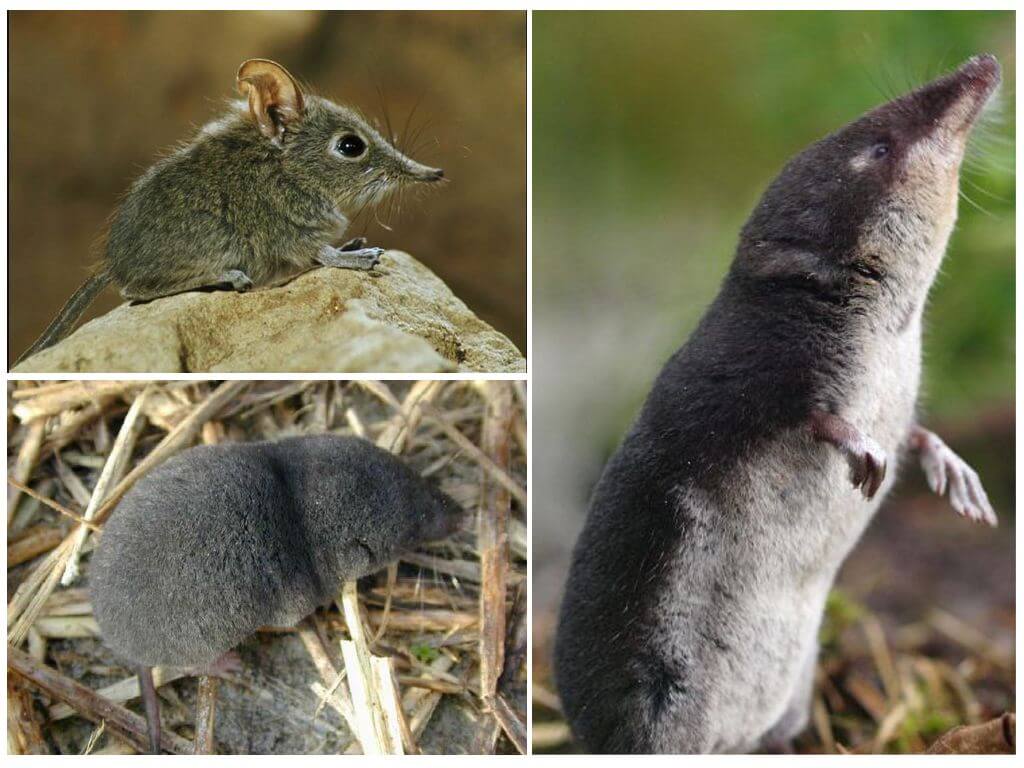
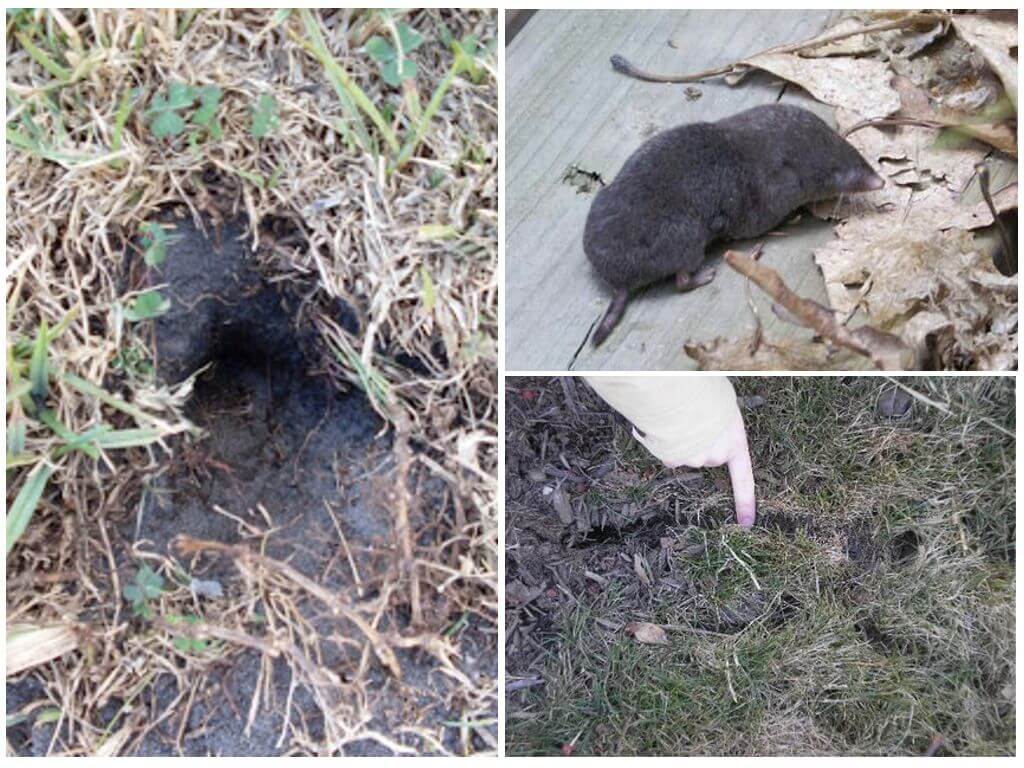
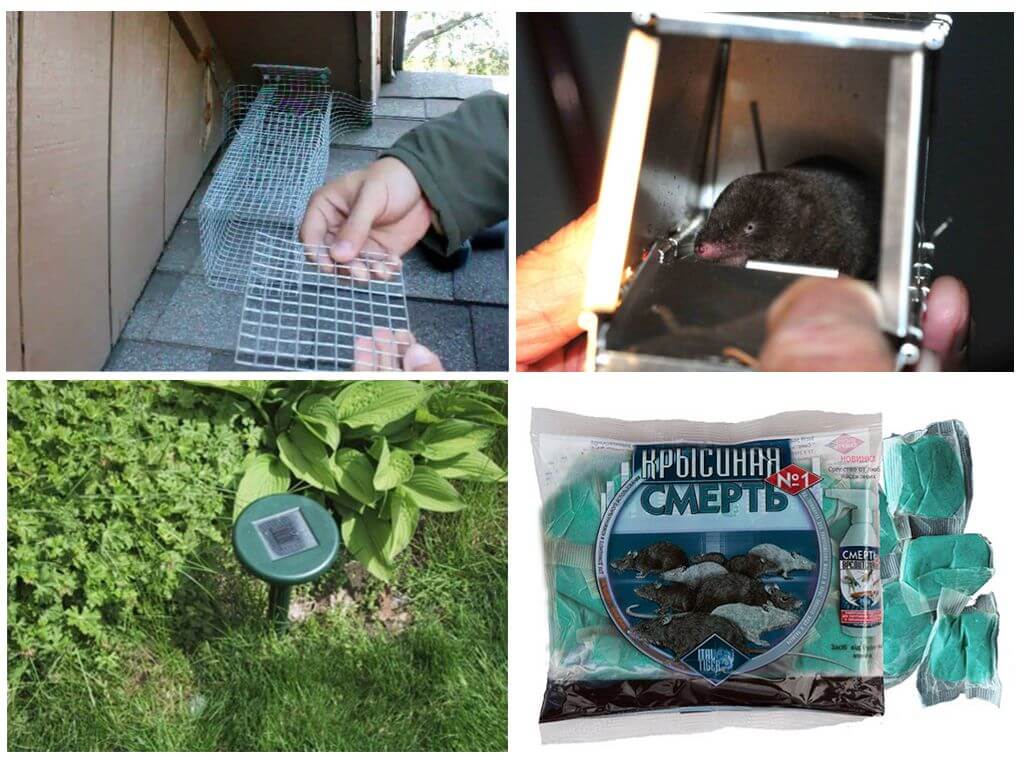
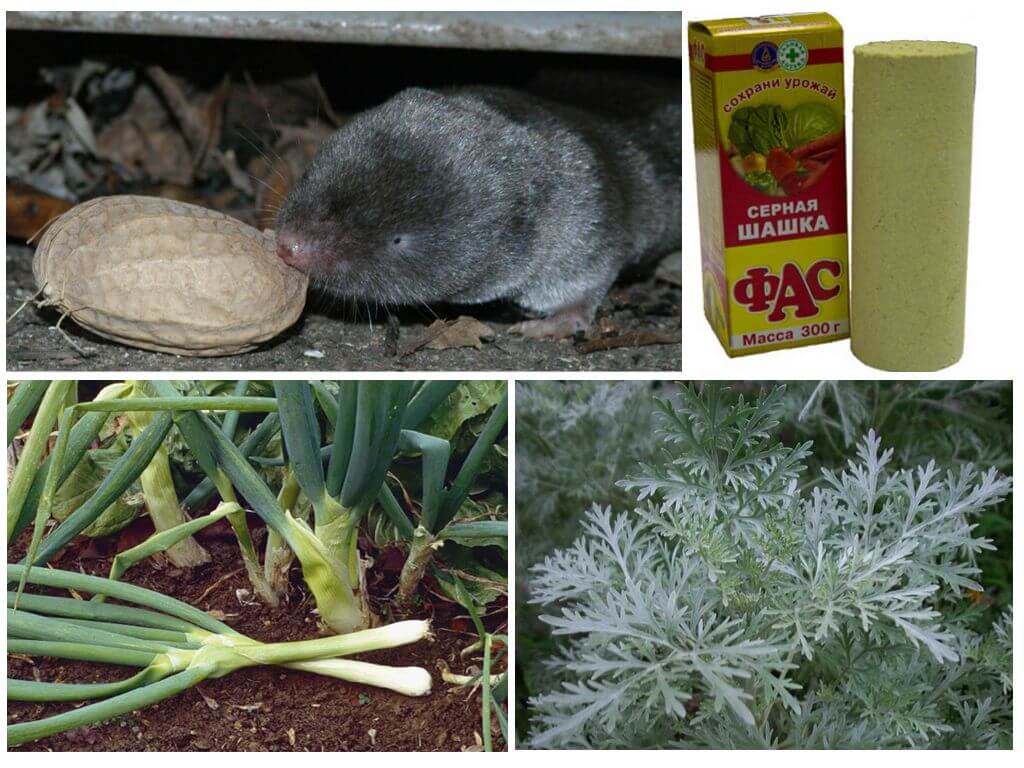
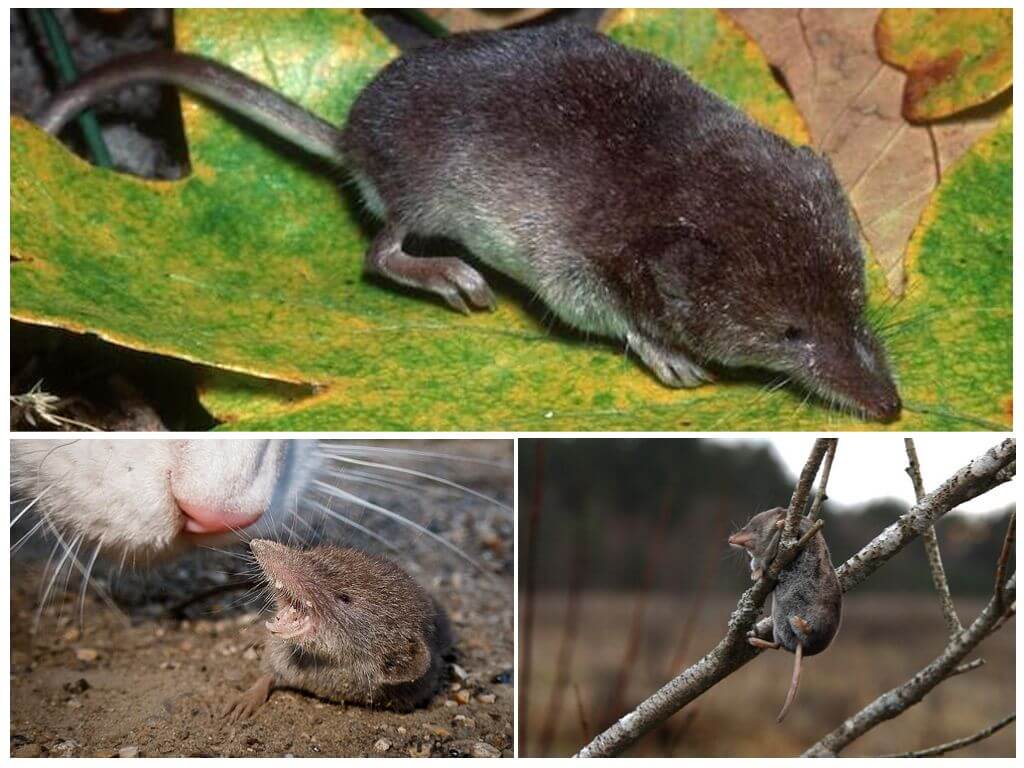

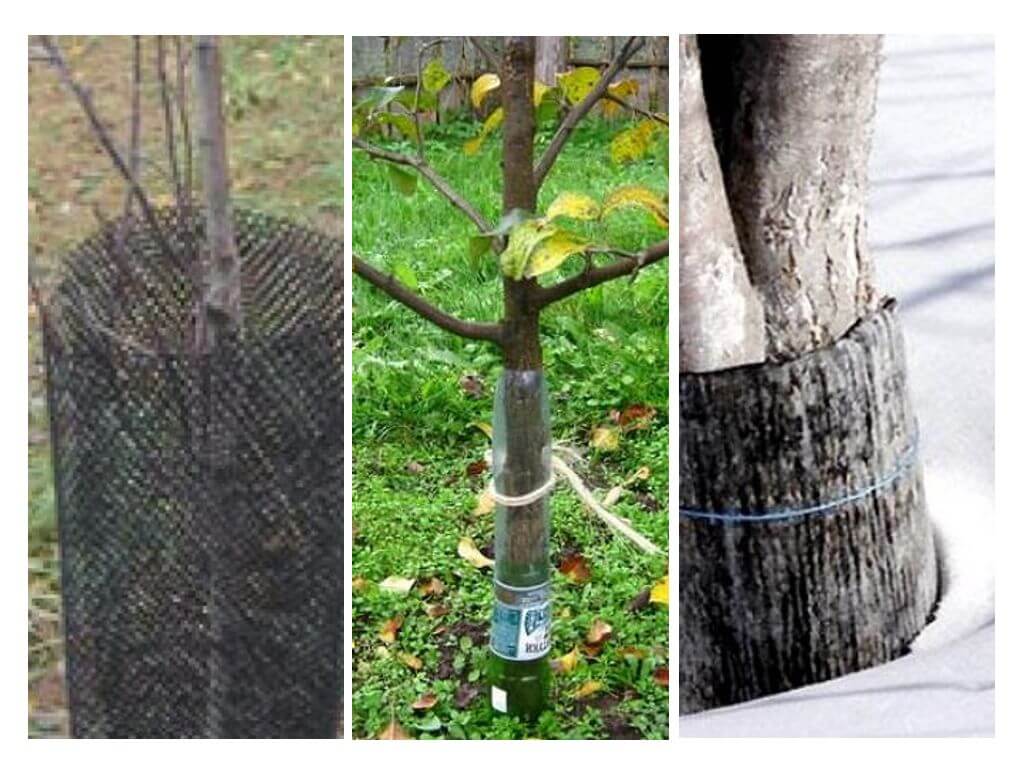
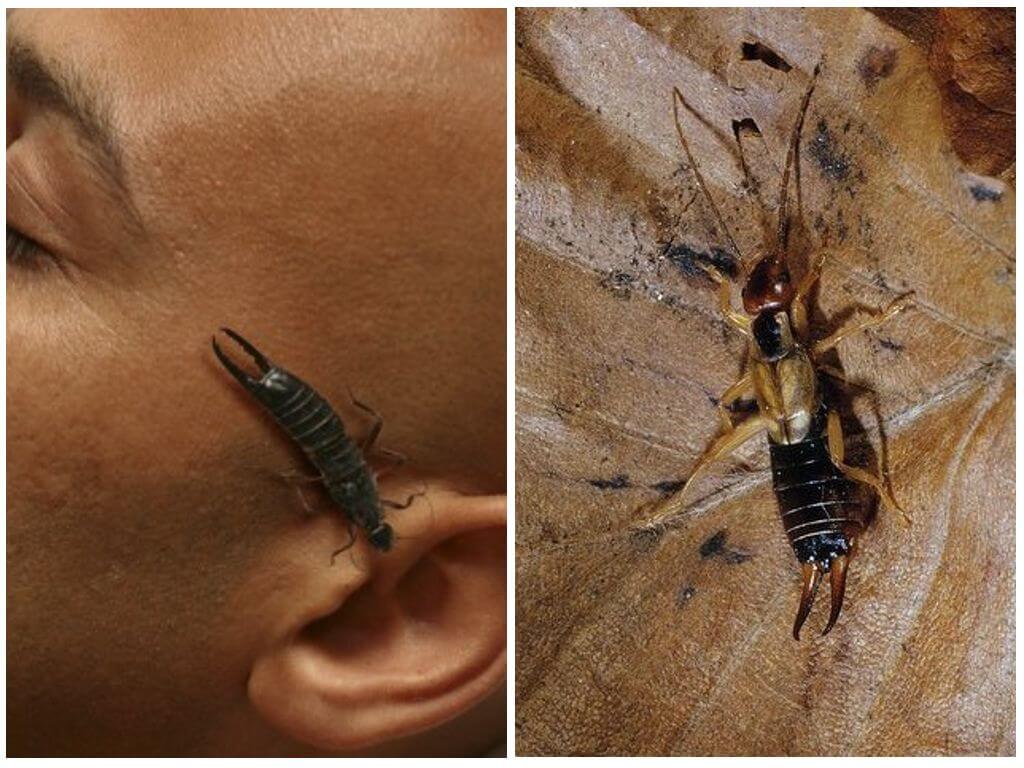
I don’t understand why they should be destroyed at all. Shrews benefit by eating a lot of garden and garden pests, and they dig up the ground thoroughly, which is useful for the crop. It's a pity to kill them.
I am writing a recipe taken from the Internet about how to drive shrews from the cottage using mechanical alarms that ring very loudly. One owner bought several of these and dug them in several places in the garden, starting at different times, so that everyone would call an hour later than the previous one. Imagine the underground ringing! By morning, all the shrews fled away.
Super-way, I like it, and then where to put so many alarms?
I drive out my shrews with a bucket of water, which I fill in holes. If they don’t leave right away, I repeat again. The method is quite effective.
I vote for the most humane way that I have already tested in my country house - an ultrasonic repeller. Put, turned on, and all the pests scattered through the forests and fields. Recommend.